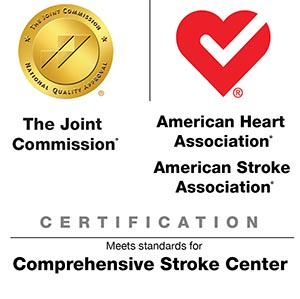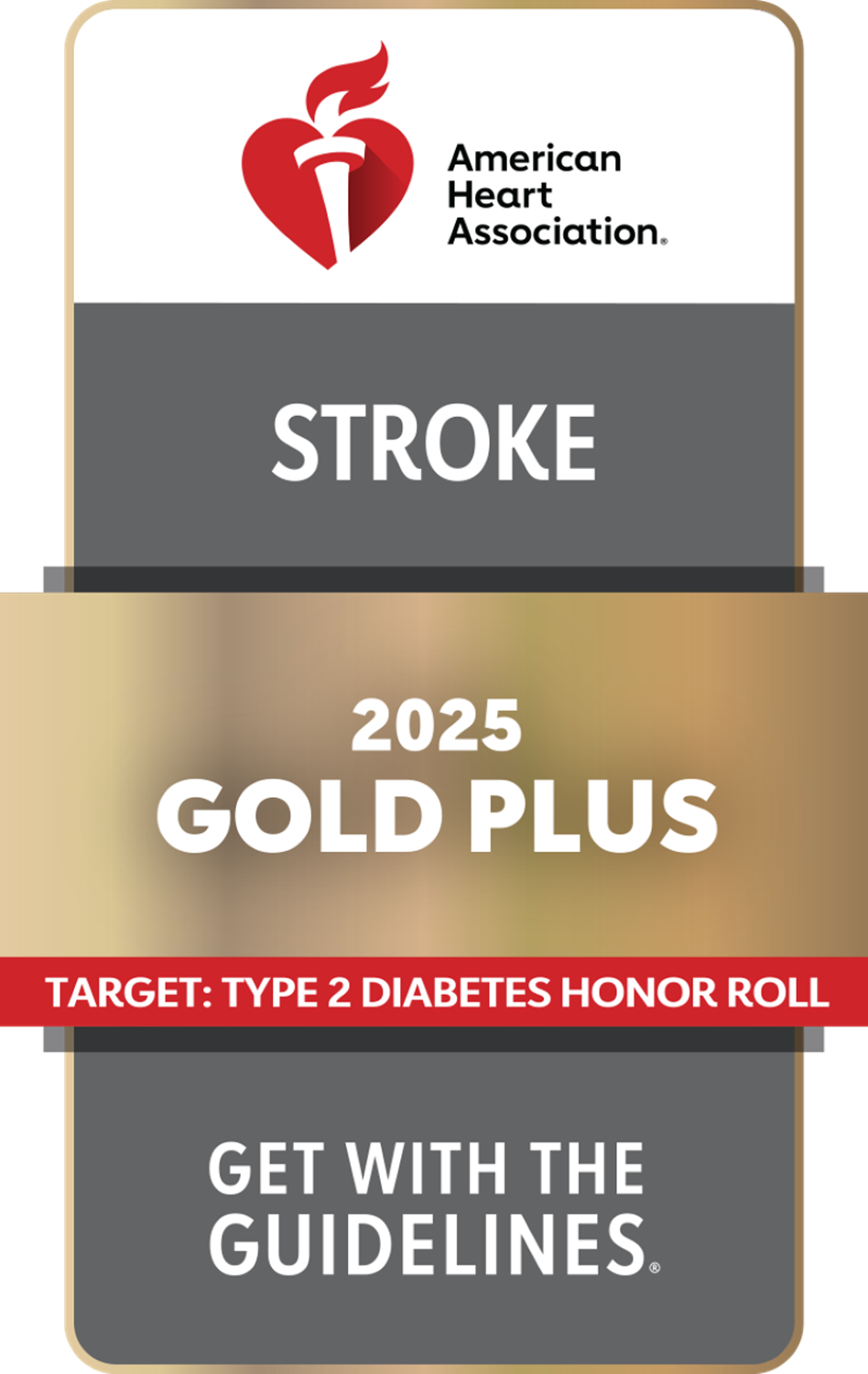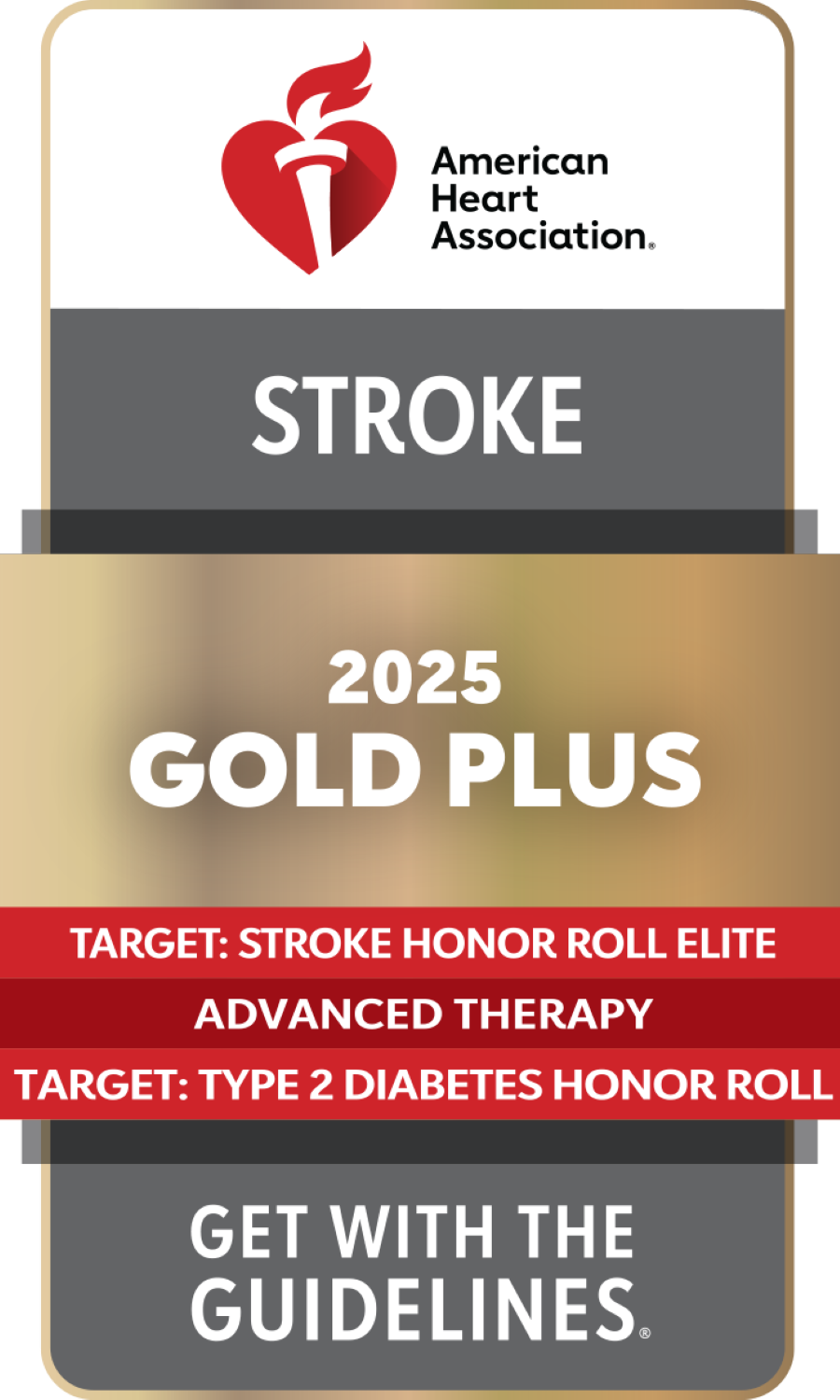A stroke occurs when blood can’t get to part of your brain. When it comes to stroke, seconds matter. Approximately 2 million brain cells die every minute during a stroke. Recognizing the signs of a stroke and getting medical attention F.A.S.T. (Face drooping, Arm weakness, Speech difficulty, Time to call 911) can save your life or that of a loved one.
The Nebraska Medicine Stroke and Neurovascular Center provides 24/7 care to stroke and ruptured brain aneurysm patients. It is the only Joint Commission Certified Comprehensive Stroke Center in the region.
What to expect
If you or a loved one come to Nebraska Medical Center by emergency medical services (EMS) after having a stroke or a ruptured aneurysm, you can expect to have our team waiting for you at the door.
There will be a quick assessment, and then we will rush you or your loved one to a CT scan to determine if treatment is possible. After the scan, you’ll return to the emergency department for a complete examination and further treatment. Once stabilized, you or your loved one are admitted to an inpatient stroke unit for further treatment. The average stay for a stroke patient is five days.
Why you should choose Nebraska Medicine for stroke and aneurysm care
Nebraska Medical Center is the only hospital in the region with neurovascular surgeons performing the newest and most advanced care for surgical and nonsurgical problems and fellowship-trained neurocritical care physicians leading the neuro ICU team, 24 hours a day, seven days a week. View our impressive statistics.
Because we are the region’s only 24/7 stroke team, our nurses receive extensive stroke training and education, and we never go on diversion for stroke patients. (Diversion means a hospital is too busy to accept new patients.)
The most common type of stroke is an ischemic stroke. This stroke is caused by a blockage in a blood vessel that stops oxygen flow to the surrounding brain tissue, causing cell death. To stop this process, we can give a drug called tissue plasminogen activator, or tPA. This medicine is the only one of its kind to be approved by the Food and Drug Administration for treating an acute ischemic stroke.
We provide our patients access to new medications and clinical trials. This means we are often among the first to learn about new drugs and clinical trials designed to help combat stroke or to help stroke patients recover.
We offer excellent rehabilitation services to help you recover from a stroke. Stroke is the leading cause of disability in the U.S. Implementing stroke rehabilitation services immediately after your stroke is crucial to your recovery. The goal of your personalized rehabilitation program will be to help you achieve the highest level of independence and quality of life possible.
Our Locations
-

Emergency Services at Bellevue Medical Center
2500 Bellevue Medical Center Drive
Get Directions
Bellevue, NE 68123 -

-

-

Neurological Sciences Center at Clarkson Doctors Building North
4242 Farnam St., Suite 650
Get Directions
Omaha NE 68131 -

-

Neurosurgery Clinic at Clarkson Doctors North
4242 Farnam St., Suite 550
Get Directions
Omaha NE 68131 -

Vascular Surgery Clinic at Columbus Community Hospital
4600 38th St
Get Directions
Columbus, NE 68601
-
Signs of stroke
Use this page as a reference guide for recognizing if what you're seeing or experiencing may be a stroke.
View More -
Stroke Center outcomes
The Nebraska Medicine Stroke Center treats over 900 patients every year. See our latest outcomes.
View More -
Stroke Center awards and accreditations
Learn more about the Nebraska Medicine Stroke Center's impressive list of awards and accreditations.
View More -
Telestroke services
Learn about how we can examine your symptoms remotely, via our Telestroke program.
View More -
Stroke survivor and caregiver resources
View this page for a variety of patient sources from the Nebraska Medicine stroke team.
View More -
Physician resources for stroke
If you are a doctor looking for information on transferring an acute stroke patient or protocols, this is the page you want.
View More

The Joint Commission, in collaboration with the American Heart Association and American Stroke Associations Brain Attack Coalition, certifies Nebraska Medical Center as a Comprehensive Stroke Center. This is the highest level of stroke certification available.
 |  |
The American Heart Association and American Stroke Association have recognized:
Nebraska Medical Center
- Get With The Guidelines® Gold Plus Achievement Award
- Target: Stroke Honor Roll Elite Plus Recognition
- Target: Type 2 Diabetes Honor Roll
Bellevue Medical Center
- Get With The Guidelines® Gold Plus Achievement Award
- Target: Type 2 Diabetes Honor Roll

